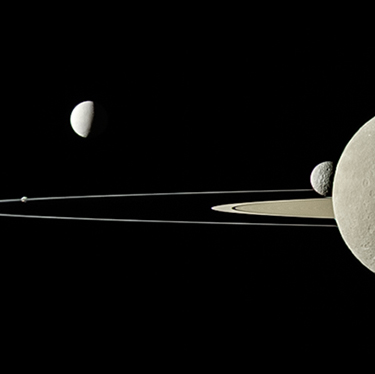From our solar system to exoplanets
Our work at the forefront of planetary physics focuses on understanding the climates, atmospheres, surfaces, interiors, dynamics, formation, evolution, and habitability of the many worlds both in our solar system and throughout our galaxy, and Earth's place among them. Our researchers combine their expertise in theory, observations, astronomical instrumentation and space instrumentation to bridge departments within Physics and Earth Science, including Astrophysics and Atmospheric, Oceanic, and Planetary Physics (AOPP) in pursuit of this interdisciplinary science.
Exoplanets
 Exoplanets is a fast-paced, discovery-driven field and Oxford is home to one of its largest research hubs in Europe. Our work includes advanced statistical and machine-learning methods and precision radial-velocity measurements for exoplanet detection, as well as detailed atmospheric characterisation via innovative high resolution spectroscopy and high contrast imaging techniques. This complements our instrumentation development of HARMONI and EPICS for the Extremely Large Telescope (ELT). We are leaders in advanced retrieval techniques for extracting atmospheric structure and composition from astronomical observations. Our simulations explore the vast and eclectic zoo of exoplanets, from uninhabitable terrestrial planets such as lava planets, through habitable-zone terrestrial planets, and up through sub-Neptunes and hot and ultra-hot Jupiters and brown dwarfs. Pioneering work on long-term atmospheric evolution and habitability has been done at the interface of astrophysical, atmospheric and geochemistry disciplines.
Exoplanets is a fast-paced, discovery-driven field and Oxford is home to one of its largest research hubs in Europe. Our work includes advanced statistical and machine-learning methods and precision radial-velocity measurements for exoplanet detection, as well as detailed atmospheric characterisation via innovative high resolution spectroscopy and high contrast imaging techniques. This complements our instrumentation development of HARMONI and EPICS for the Extremely Large Telescope (ELT). We are leaders in advanced retrieval techniques for extracting atmospheric structure and composition from astronomical observations. Our simulations explore the vast and eclectic zoo of exoplanets, from uninhabitable terrestrial planets such as lava planets, through habitable-zone terrestrial planets, and up through sub-Neptunes and hot and ultra-hot Jupiters and brown dwarfs. Pioneering work on long-term atmospheric evolution and habitability has been done at the interface of astrophysical, atmospheric and geochemistry disciplines.
Planetary physics
 Our extensive research into Planetary Physics covers interests in planetary bodies throughout the solar system and beyond. We collaborate across multiple research areas:
Our extensive research into Planetary Physics covers interests in planetary bodies throughout the solar system and beyond. We collaborate across multiple research areas:
- Solar System Research
- Planetary Surfaces
- Space Instrumentation Development using our world-renowned Instrumentation Facilities
- Planetary Atmospheres
- Planetary Climate Dynamics



